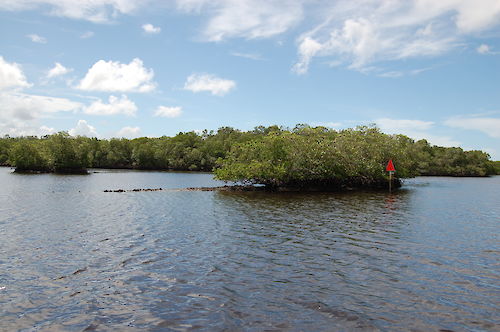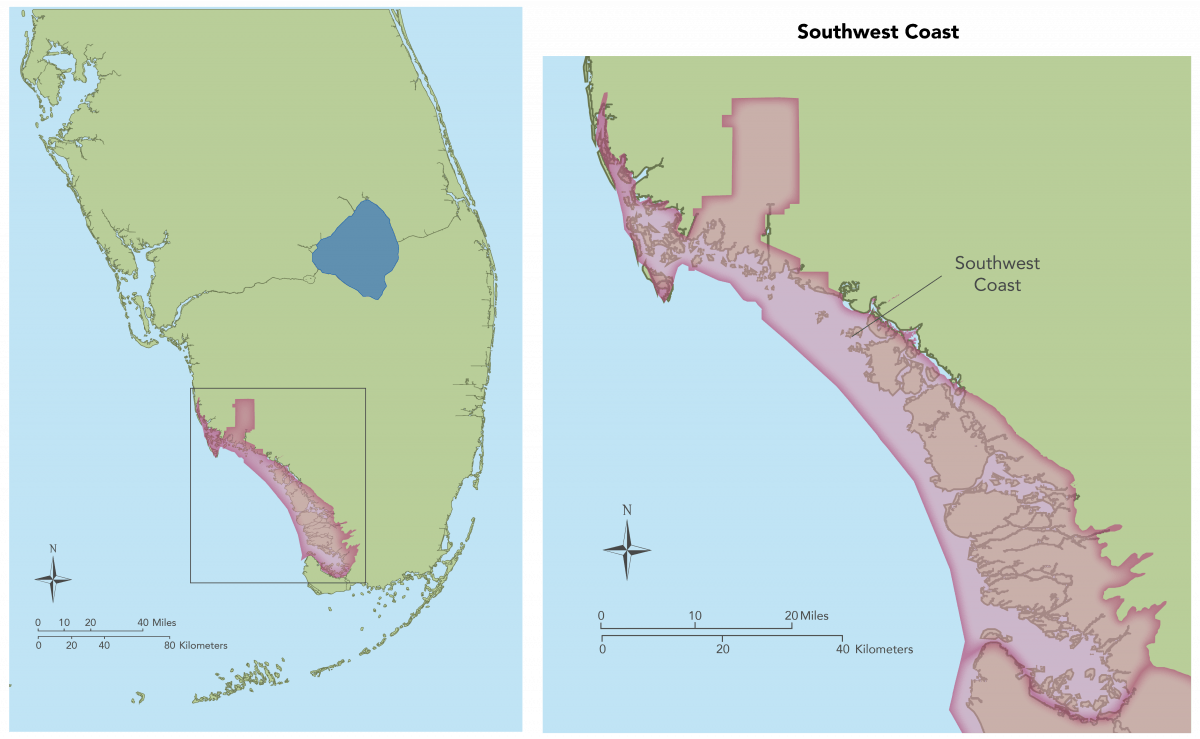Southwest Coast
The Southwest Coast is made up of two areas, the Lower Southwest Coast and Upper Southwest coast. The Lower Southwest Coast sub-region extends from Cape Sable to Lostman’s River and it is more riverine in nature, with major rivers and sloughs conveying freshwater from the Everglades to the relatively unprotected coast. The Upper Southwest Coast, extending from Lostman’s River north through the Ten Thousand Islands, is characterized by a smaller system of rivers and creeks that convey freshwater from upstream to a coastal area dotted with thousands of islands and embayments, resulting in a more complex estuarine circulation than the Lower Southwest Coast. This region is known for eastern oyster reefs, that provide habitat for a myriad of invertebrate and fish communities. The coastal wetlands in the Southern Coastal System include the largest spatial extent of mangrove forests in the United States, as well as large expanses of graminoid marsh. These vegetation communities provide vital nursery and forage habitat for fish and wading birds. Along the upper southwest coast, reduced flows to the coast have affected the health, density, and distribution of eastern oysters and their associated communities. Point source discharges from conveyance canals to the estuaries also cause rapid, high-frequency fluctuations in salinity that is harmful to the benthos. Climate change and sea level rise are affecting the Southern Coastal System and those impacts will likely accelerate in the future. (Photo of Rookery Bay in the Southwest Coast by Alexandra Fries used with permission)
Return to Southern Coastal System Info
Return to Regions Main Page
